ARCHITECTURE? Pfft. It’s just drawing boxes, right? But then we could say the same of designing cars – quite literally in the case of Volvos past – and yet we lionise the lines drawn by the great automotive crayon-wielders. We love their work because they don’t just please our eye, they make us feel something approaching awe.
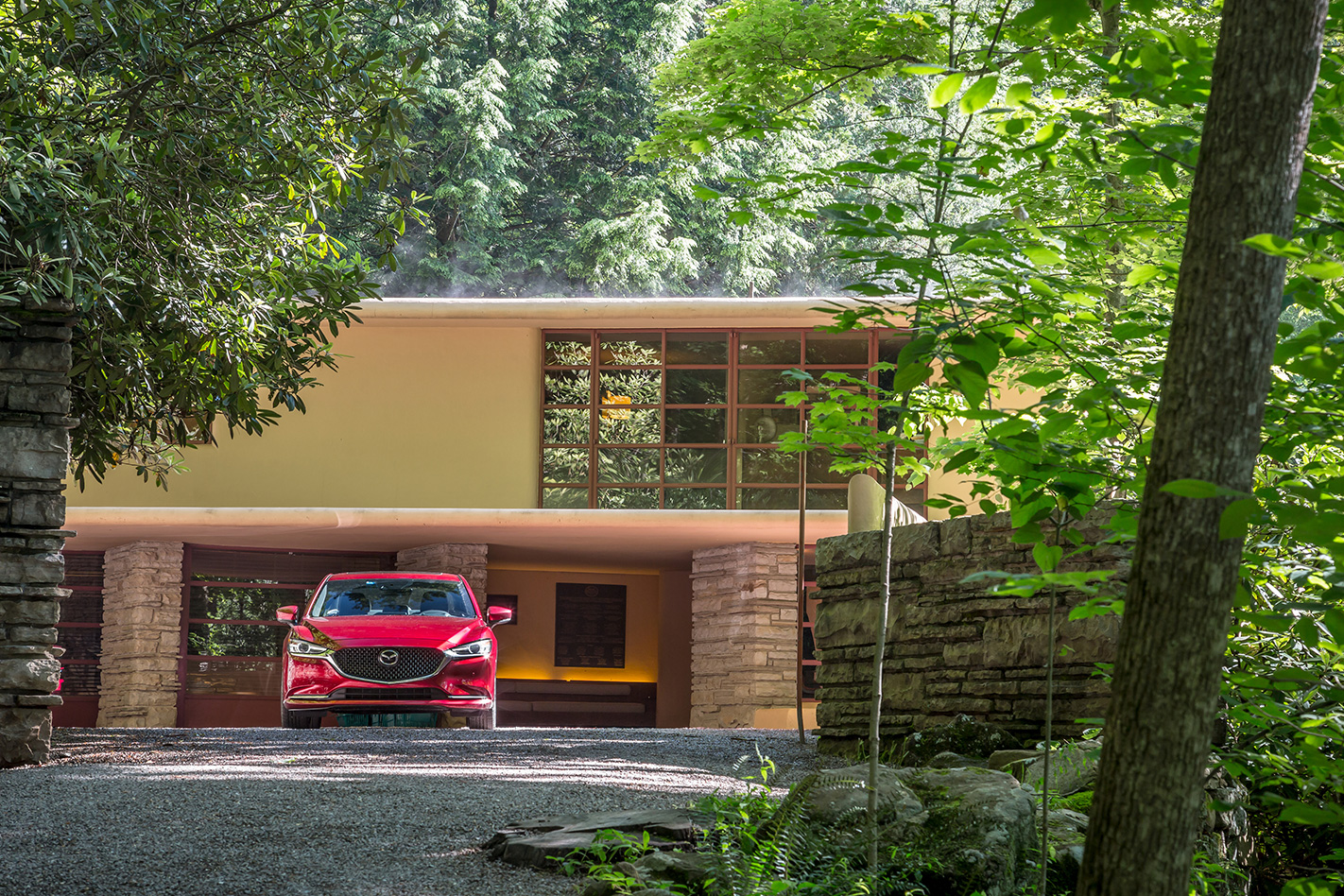
Buildings are generally harder to get excited about, but there are a few architects who can do the same – I challenge you to visit Barcelona and not go ga-ga over Gaudi, for example.
Only one, though – the late, great Frank Lloyd Wright – had a truly profound effect on the world we live in: The Car World. This was partly because he was a mad motoring enthusiast himself, which informed his output, and New York’s magnificent Guggenheim Museum in particular, but mostly because he came up with something you may well use every day – the carport.
Oh, and he’s also arguably responsible for the creation of suburbia, which you probably live in every day.
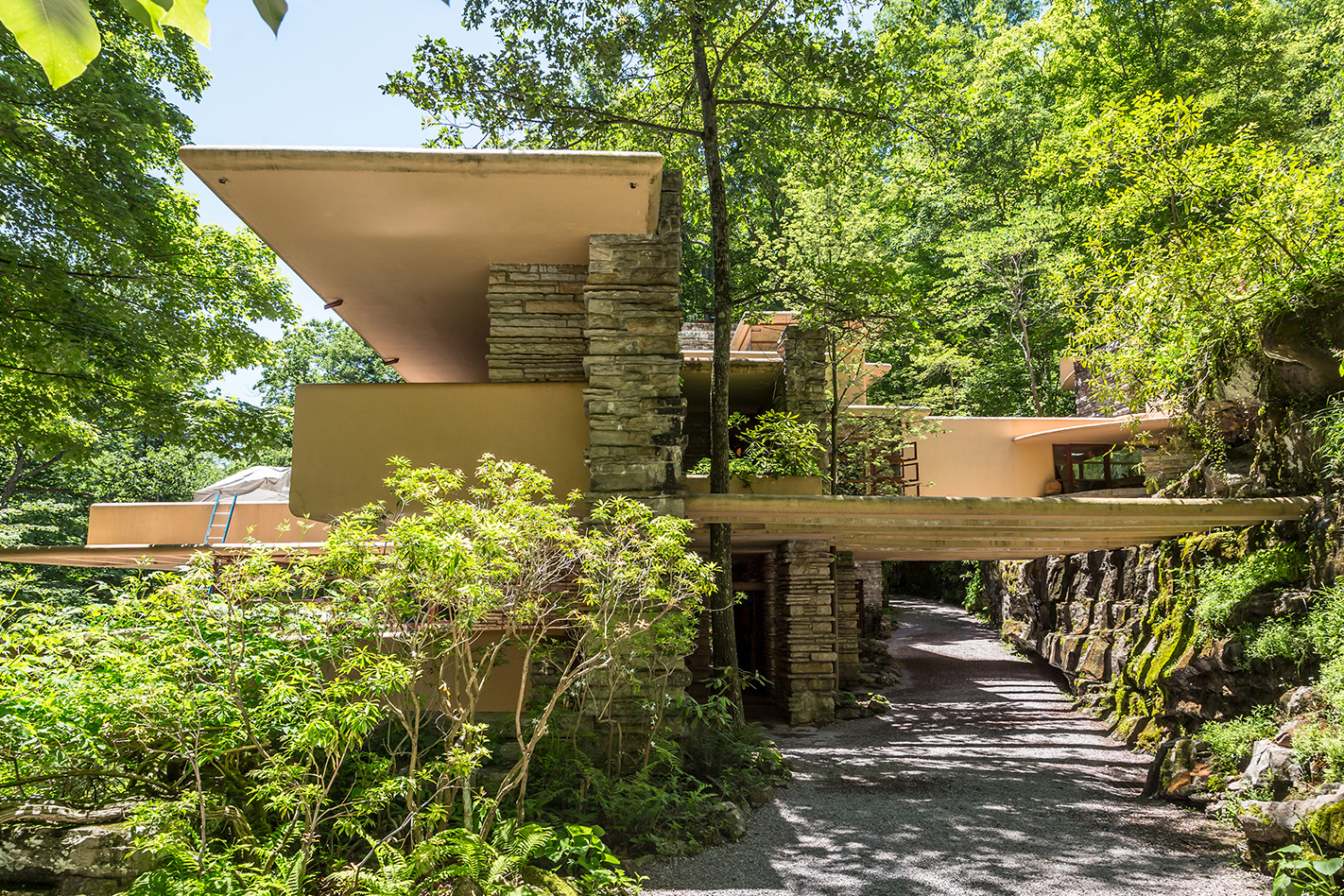
Wright, a phenomenal and prolific talent who designed more than 1000 buildings in his long lifetime (around 500 of which were built, with more than 420 of them still standing today) – is also sometimes credited with inventing the modern garage, being the first to incorporate such a structure into an American home – a three-car one no less, for a very early motoring enthusiast – at the Robie House, built in Chicago way back in 1910.
Ironically, however, he hated garages, and later refused to build them for clients, even if they asked nicely, because they promoted clutter (I can’t imagine where he got that idea from), “and clutter is a sure sign of a diseased mind”, as he liked to say.
When he came to build what many see as his most astonishing masterpiece, a feat of fancy called Fallingwater, which somehow floats over a waterfall, he gave it something he dubbed a ‘carport’, arguing that cars were not horses, and didn’t need stables to stop them from running away.
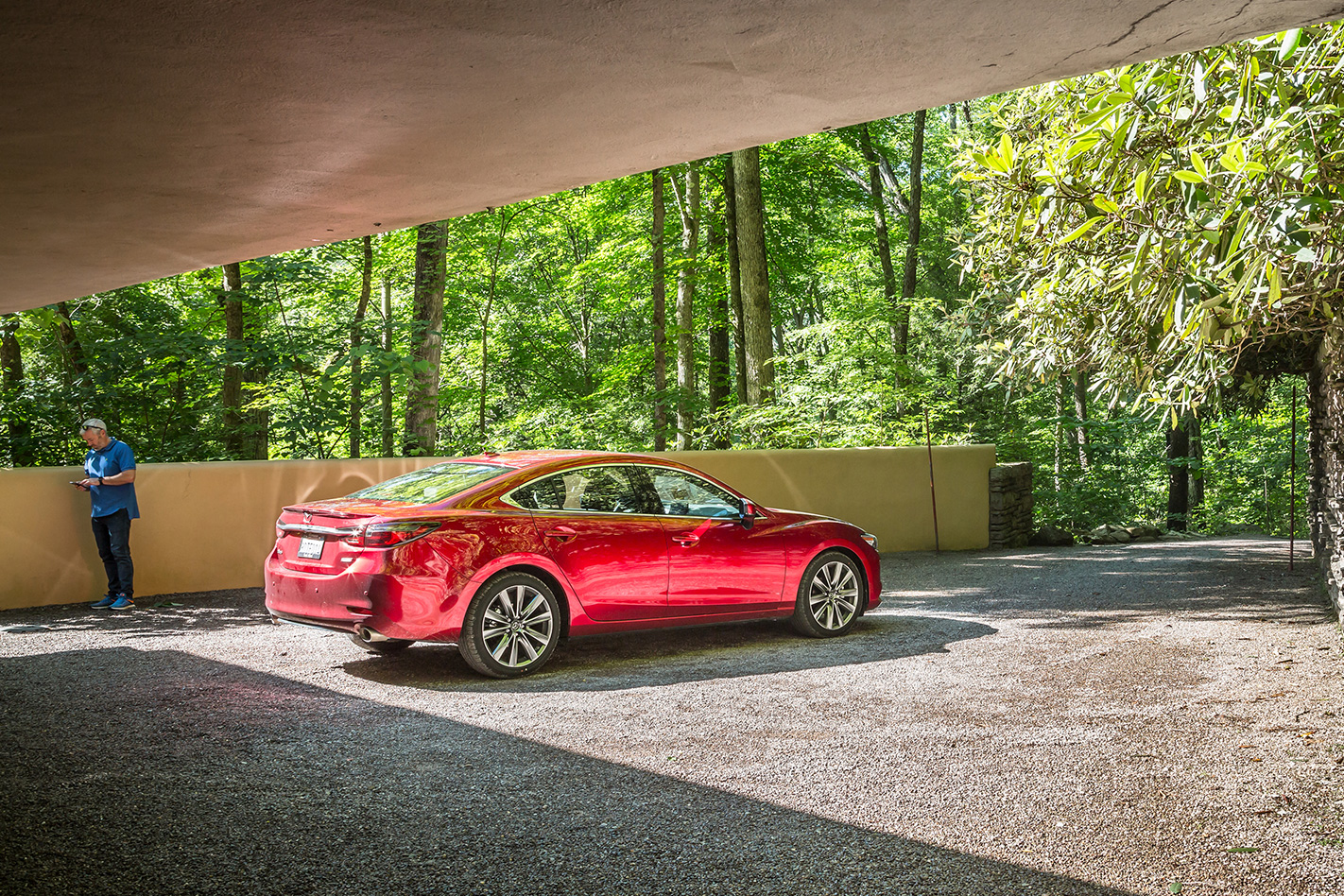
As a bonus, the carport also allows your most cherished vehicle to show its face, and to become part of the aesthetic of your home, an idea that appealed to the car-mad architect.
We decided to pay pilgrimage to this creation with a trip to deepest Pennsylvania, where this house has been rearranging people’s jaws (it will receive its 6 millionth visitor in 2018) for more than 80 years, and Mazda, a company that shows a love of design, particularly with its sleek and sharp-edged new 6, was more than happy to lend us a car for the eight-hour schlep from New York City.
I have always loved NYC, but never driven in it, and I must admit that tackling its immovable, infuriating traffic does knock some of the shine off the Big Apple.
Lloyd Wright hated Manhattan’s inorganic messiness, apparently, but still agreed to live there, for five years in the 1950s, in a special celebrity suite at the Plaza Hotel. It was here, rumour has it, he had many trysts with his clients, including Marilyn Monroe, despite the fact that he was in his 80s by then (he was born in 1867). Clearly, we’re talking about an extraordinary human being here.
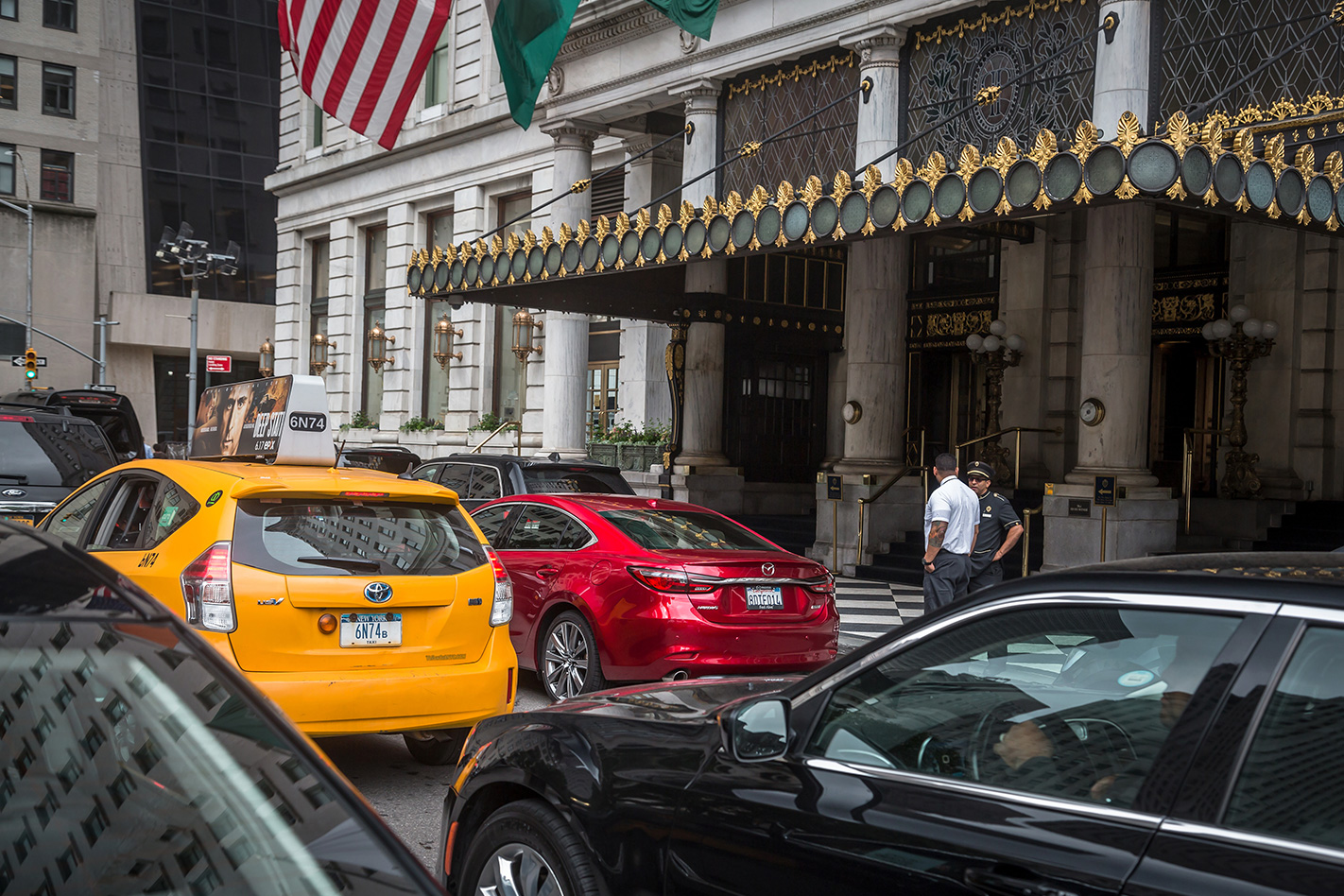
We valet park our pretty red Mazda, which looks unsurprisingly tiny in this thrusting concrete jungle, at The Plaza, once dubbed ‘the world’s most luxurious hotel’ and spend the night soaking up the olde-world wonders Frank endured. There are places where even the air seems scented with the crinkly sniff of money, and this is one of them (we just missed Mariah Carey, apparently, and the only celebrity we spot is … Aussie maths nerd and presenter Adam Spencer).
Miraculously we made it out of Manhattan the next morning with our panels intact (although not our tempers, as the 6’s sat-nav managed to become confused by even the simple grid of New York) and quickly found ourselves exploring the dichotomy that is the United States of A-mess-ica.
Not so far from the cultured craziness of Manhattan you are driving through Amish townships (Intercourse was our favourite) where supposedly technology-fearing young girls in bonnets and boots are rolling in horse-drawn buggies with suspiciously modern indicators.
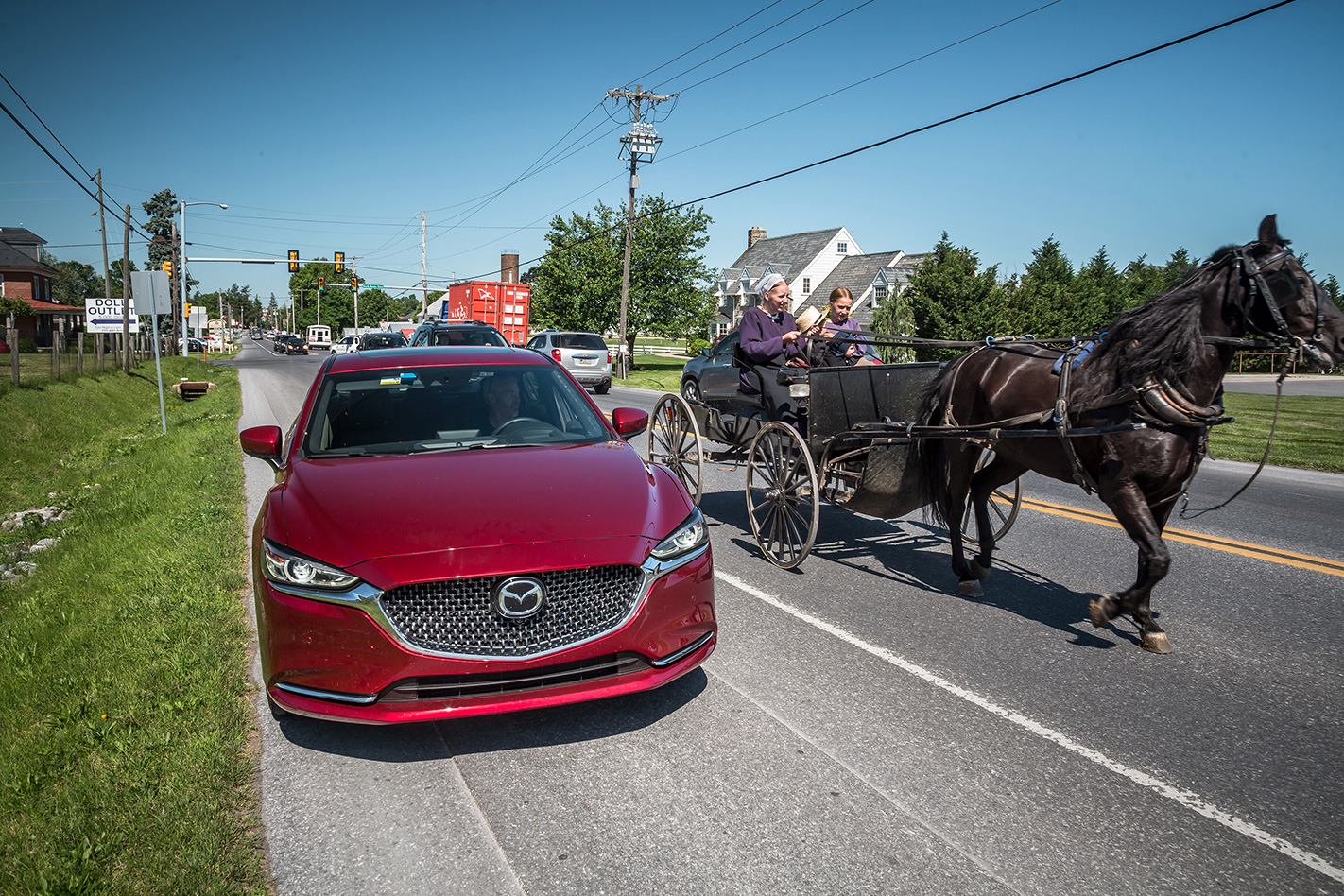
And then there are the billboards – right opposite the Lion’s Den sex shop, someone has raised a sign saying: ‘Lust drags you down to HELL’. Nearby is an ad claiming that ‘Good Christians love their enemies’ almost next to another saying, ‘We buy and sell guns’. A little way up the freeway – the constant road grumbling of those interstates is a sound well soaked up by our Mazda’s quiet cabin – is my favourite: ‘Impeach now! Make America America Again!’
Pennsylvania, where Fallingwater hides in a deep, fecund forest, is an interesting state, to say the least. It voted Democrat in every election since 1992, and leaned Obama’s way twice, but in 2016, the state’s voters plumped for Trump.
At a filling station sitting on the Mason-Dixon line, which seemed to be putting antique bowsers to good use, we meet John P Reichenbecher, 76, who is very curious about where we’re from and why our car is so puny, and shows off his general knowledge by pointing out that the famous Arnold Schwarzenegger comes from the same place as us, “yup, that Austria”.
After a day of dirge-like driving on droning highways, we find the final winding, smooth-surfaced climb to Fallingwater a blessed relief, and a chance to find out if our Mazda 6 GT has real legs to stretch. The good news is that there are at least touches of the wondrous, Wheels COTY winning, MX-5 in the way it steers and turns in, although its ride is, happily, more pliant and comfortable when cruising.

The 2.5-litre turbo engine, however, is more suitable than scintillating, which is a surprise, considering it also does duty in the CX-9, delivering the same 170kW and 420Nm. While it never struggles to overtake or climb hills, nor does it inspire much in the way of excitement, particularly in the aural sense. Hitting the Sport button merely seems to make the six-speed auto hold each cog endlessly, producing more induction intrusion than invigoration.
As a family car, however, and an undeniably attractive one, it hits its targets perfectly. On a twisty bit of road I am reminded, once again, of how passionately I prefer a car like the 6, with its inherently superior handling balance and lower centre of gravity, over any small-, mid- or stupid-sized SUV you might care to name. I would have the 6 not just over a CX-5, but over a Q5, personally.
Mazda America’s CEO, Masahiro Moro, told me at the launch of this car last year in LA that Mazda is now taking on the Germans, but more in “design and craftsmanship” and “human-centric driving performance”, than sheer driving pleasure. It’s about “everyday driving, rather than peak performance”, as he put it.
The quality of the exterior design is inarguable, but it’s the new interior that really commands your attention. The harmony of the design, the quality of the materials and general tactility all take the cabin of the 6 to a new level for a mainstream manufacturer. Yes, there’s still room to improve the multi-media system and screen but, vitally, everything is undeniably nicer than you’d expect at this price point – A$43,990 for our leather-trimmed GT.
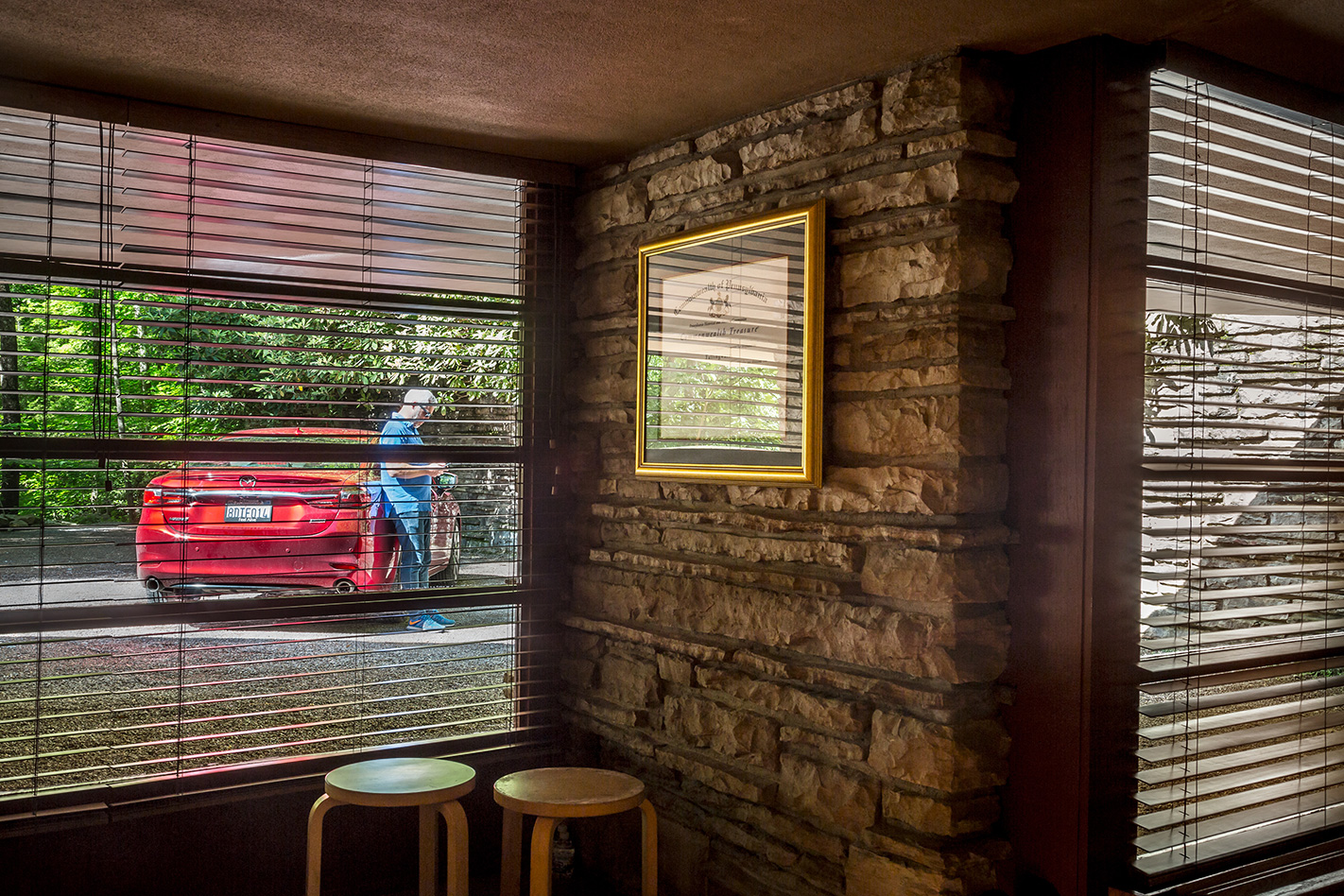
Parked in the world’s first carport out the back of Fallingwater (all four bays are partly filled in now to be used as office space) the 6 looks suitably designer-y, but not even a Ferrari could match the experience that is seeing Fallingwater for the first time.
It’s not just the fact that it seems to pause in the glimmering air over a gushing, bubbling and frankly quite noisy waterfall, like a question no one had ever thought to ask, it’s the sheer audacity of it. The leap of imagination it represents, particularly when you consider that, as shockingly modern as it looks, it was built in 1937.
It’s also astonishing to consider that the owner of the site, Edgar Kaufmann, asked Lloyd Wright to build him a house with a view of his favourite waterfall, and he basically said no; anyone can do you a house with a view, I’m going to have you “live with the waterfall, not just look at it” .
The sound, vibration and scent of the water, which seems to run almost into the living area (there’s a floating staircase down that allows you to dip your toes in) were to become “an integral part” of their everyday lives.
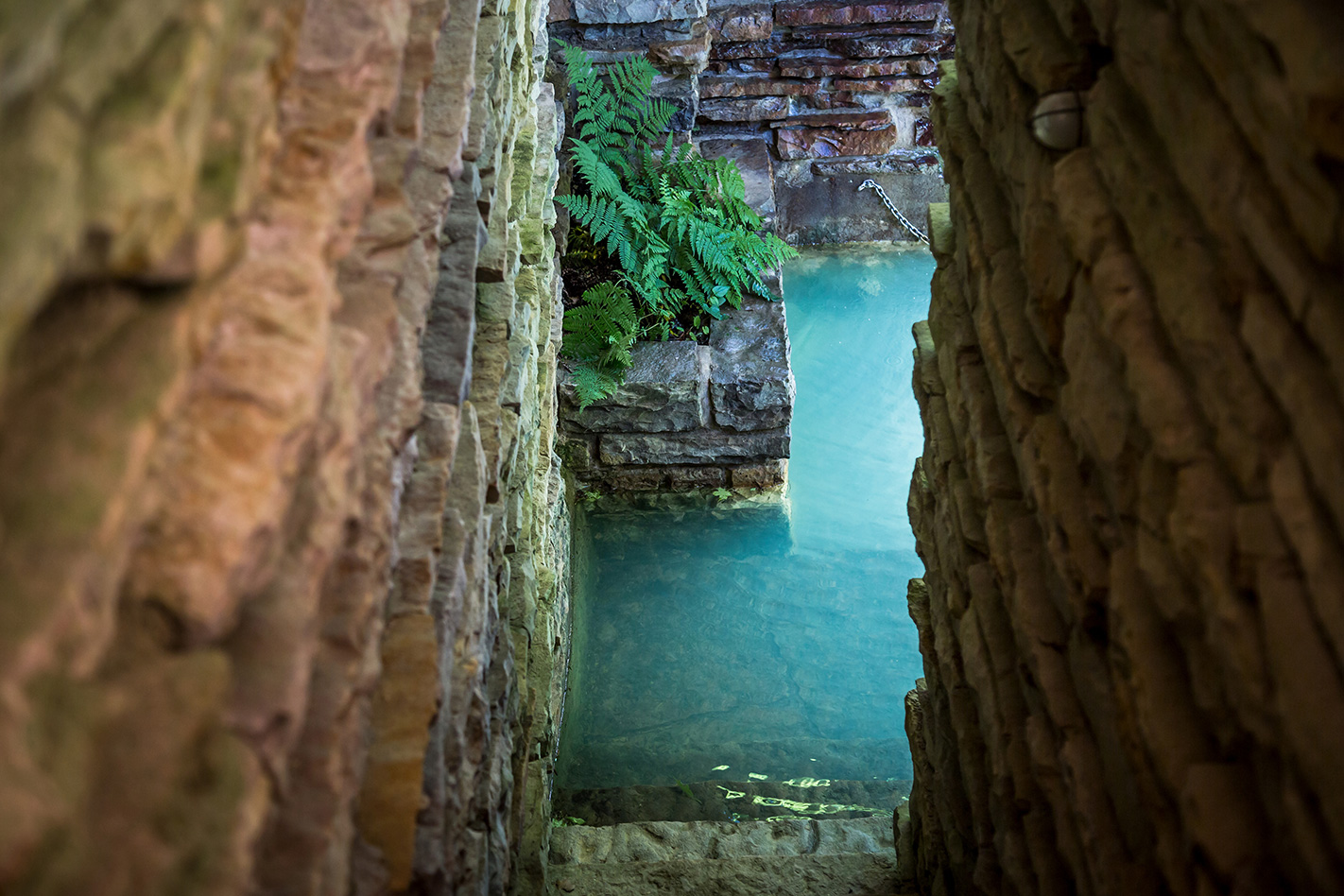
Lloyd Wright, who was already 70 when Fallingwater put him on the cover of Time magazine, was all about the idea of organic design, and it’s evident everywhere, most magically where one of the boulders used to hold fast the cantilevered terraces erupts from the stone floor, and into a vast fireplace.
Perhaps most surprisingly, you really can’t fully appreciate Fallingwater, or even properly see the Bear Run Falls it straddles, until you leave it, and walk to The View, a spot chosen seemingly by someone who knew Instagram would one day exist.
The director of Fallingwater, Justin W. Gunther – who has 150 staff helping to run the property – can wax lyrical about architecture all day, but ask him what his favourite thing is about this house and he’s momentarily lost.
“Fallingwater is about the whole composition, it’s not a singular thing… but the fact that it’s built over a waterfall is pretty cool,” he laughs.
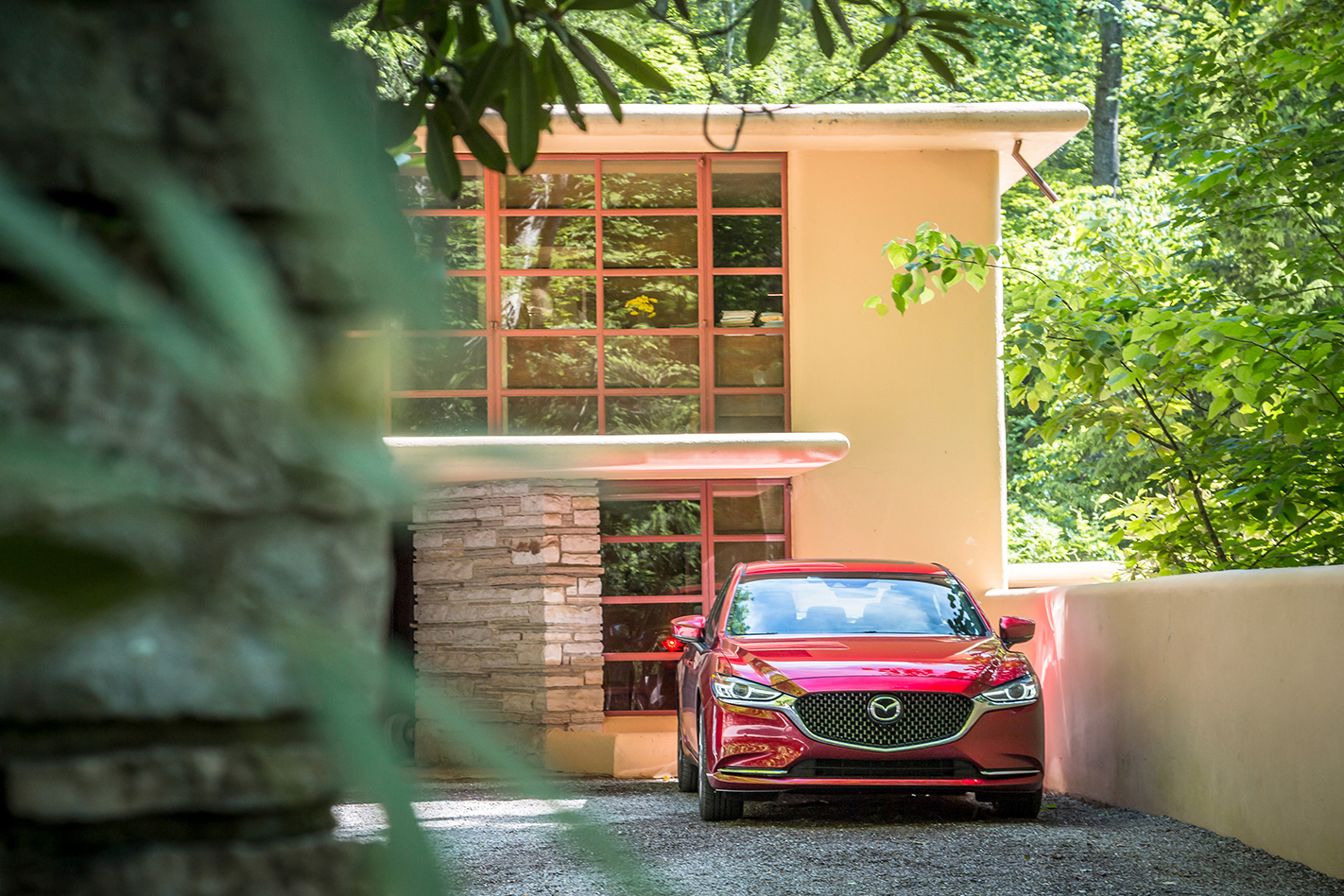
“Frank wrote that he was trying to heal this rift in the landscape with this house. He saw that break in the rock as a wound in the land, so he’s trying to build this work of architecture that’s going to heal and harmonise the landscape, and I love that idea.”
You would call this Lloyd Wright’s tour de force, and in house terms it is, but New York’s Guggenheim is surely his more famous work. It, too, has touches of his love for cars, and speed (“Frank was one of those people who simply couldn’t drive 55” as one expert told us).
“He’d previously designed this spiral ramp to sit on top of a mountain in Maryland, that was supposed to give people this automotive experience where you drove up to an observatory platform; the Gordon Strong Automotive Objective, it was called,” Gunther explains.
“The Guggenheim was an inverse of that design – it spirals in instead of up, but you’re intended to feel that idea of motion and speed and automotive design. When you’re inside the building he wants you to work your way to the top, then use your own momentum on the way down.”
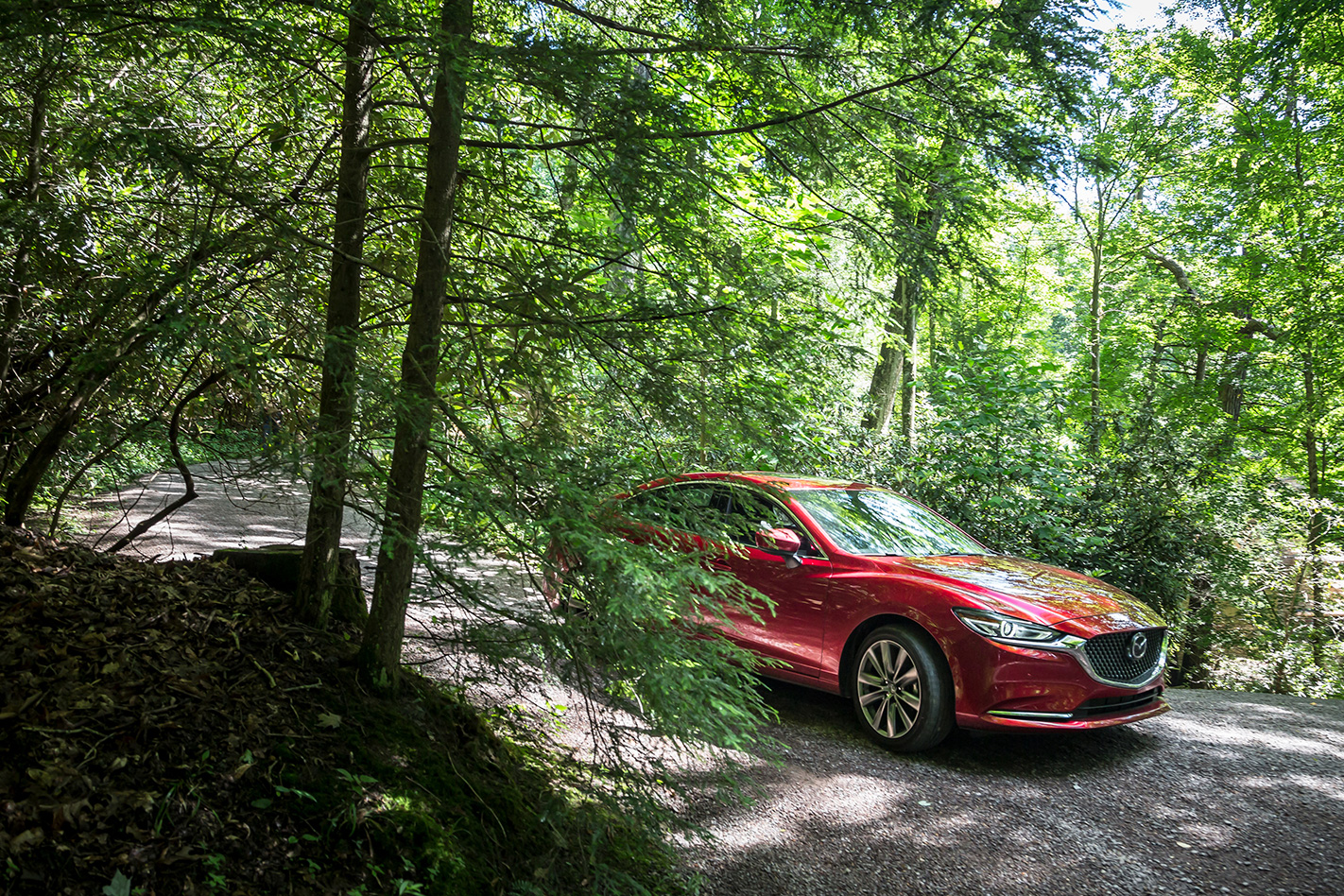
Later, as we head back to our rather rustic hotel, we bump into Jimmy Klink, 54, with a mouth full of gums and a truck full of guns, plus one on his hip. Jimmy has no idea what a Mazda is, and thinks Frank Lloyd Wright might have been a previous president, but then he also seems to be unaware of the existence of toothpaste.
Fortunately he doesn’t have much to smile about as his below-poverty-wage job washing dishes forces him to eat squirrels that he shoots himself. A proud NRA member, Jimmy takes some time to explain to me what the answer to school shootings is: “Mr Trump got it right: we needs to arm our school teachers.” No, I’m not making this up. Let’s move on.
Inventing the carport was one thing, but Lloyd Wright was also one of the first to see how the advent of the car would change the way people live. He drew up some controversial plans for a futuristic ‘Broadacre City’, and was one of the first to promote and discuss the idea of people commuting into cities from satellite suburbs.
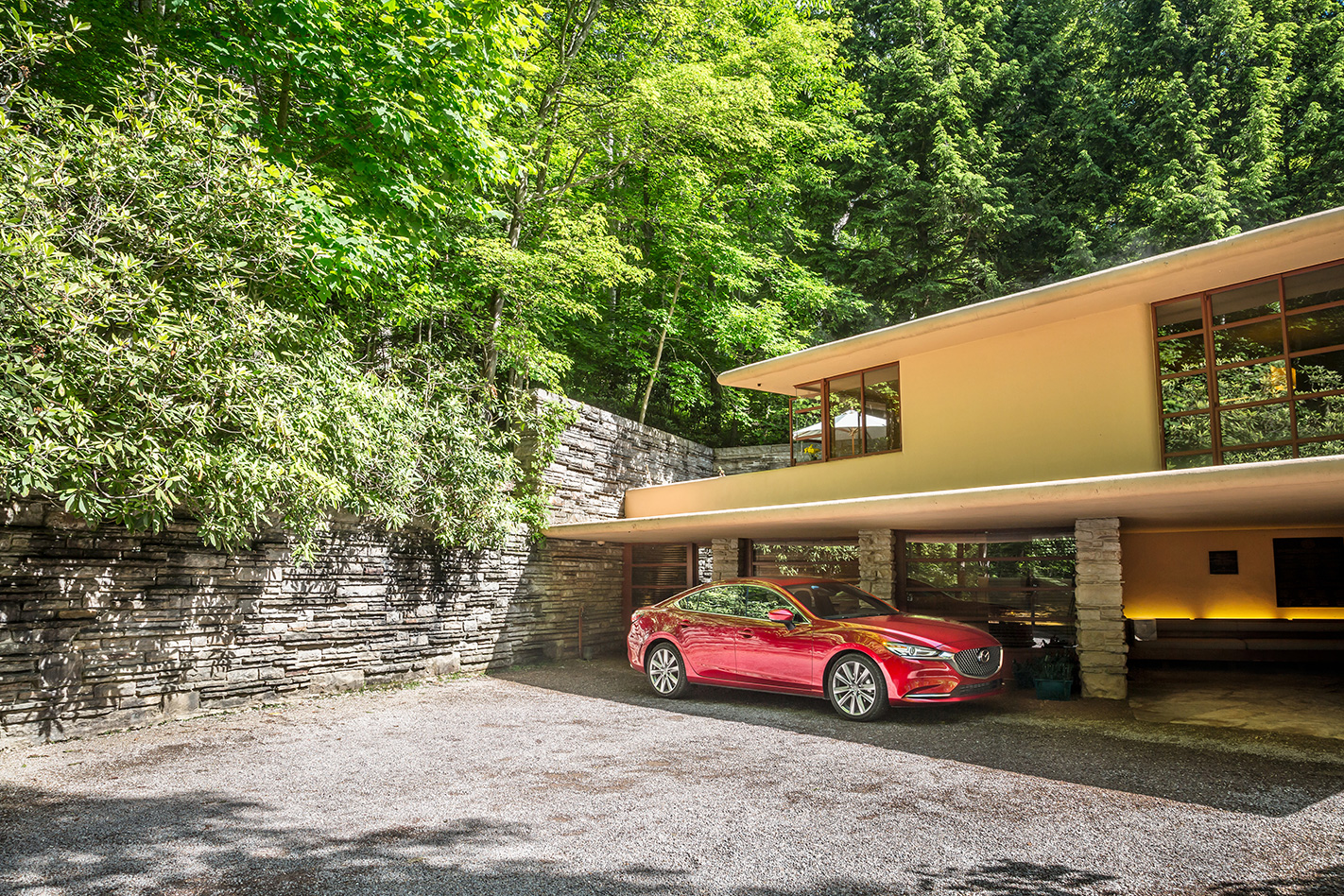
“He figured out early that every American was going to end up having a car, so we needed to think about de-centralising our cities; that the way people were living was going to change,” Gunther says.
“Quite probably, the reason that we have suburbia today is Frank Lloyd Wright.”
It’s a bold claim, but then he was a guy who lived a bold life, and whose designs and ideas continue to move people, long after this death in 1959. Not bad for drawing boxes.





